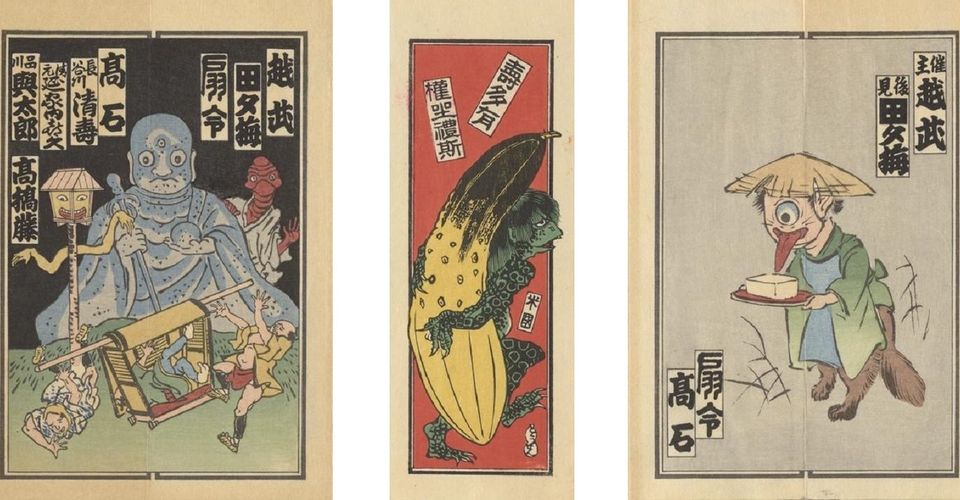What Exactly Is A Yokai (& How Video Games Get Them Wrong)

The term yōkai bounces around a lot in popular culture, but few may know what a yōkai is beyond the ways in which modern media portrays them (like anime or games such as Nioh). The term yōkai, which can be broken down in translation to 妖 (yō), meaning bewitching or alluring, and 怪 (kai), meaning suspicious, wonder, or apparition, traces its origins to Japanese folklore. Many English translations have been applied to the word over the years such as monster, demon, spirit, and goblin, all of which fail to capture something of its essence.
Yōkai encapsulate a concept that the English lexicon doesn’t have such a succinctly descriptive word for. Rather than just referring to a specific type of entity, it can cover anything falling into the category of mysterious phenomenon. This can range from goblins, strange noises in the night, floating balls of light, and anything that lies outside of explanation. Modern media and video game interpretations delineate from Japanese folkloric depiction and typically paint them rather into a corner, such as the companions in Pokémon or the enemies in Nioh.
While the strange and unusual can instill fear in humans, according to Dr. Michael Dylan Foster, not all yōkai are inherently evil. Although Nioh acknowledges this fact, most yōkai present in gameplay are enemies and must be fought and defeated. The Yoki, Onryoki, and One-Eyed Oni are described as demons, while the Onyudo is something of a corrupted former monk – all of them are strange, though some have more in common with one another than others. The seemingly yōkai-derived creatures sometimes found in Sekiro: Shadows Die Twice are a touch more folklorically focused and cast a wider net, including demons, dragons, and giant insects. Many games use the label as a categorical descriptor, but it’s an oversimplification of what otherwise wouldn’t likely be the most useful descriptive tool.
Why Video Game Yokai Are Reductive

In Dr. Foster’s essay on yōkai, there is a heavy emphasis on the variety of ways in which they present themselves, and how varied their personalities and purposes can be. Games such as Yōkai Inn and Yo-Kai Watch are two cases where oversimplification tends to misconstrue definitions. Again, while neither of these games is technically inaccurate considering the broadness of the term, the label tends to act reductively in games for what it represents. Though Yōkai Inn has not yet been released, it seems as if the game will be focusing on the more harmless yōkai for the sake of keeping the game cozy and friendly. Yo-Kai Watch has nods to traditional folklore that has been twisted in clever ways, yet still diminishes the yōkai as creatures to be caught and befriended, similar to Pokémon.
It would be unfair to any of the aforementioned games to expressly say that their depictions of yōkai are incorrect (aside from the fact that a “correct” presentation is well beside the point, and likely impossible), but rather that they bend tradition for the sake of the concise sorts of categorization games tend to use in their world-building. Most of the creatures are either strange, mysterious, or take inspiration from Japanese culture, all of which are factors that make yōkai what they are, though their abundance and explicit natures tend to reduce the mystery, often to the point of explaining it away entirely. Narratives built on local culture, belief, and storytelling, the way yōkai in folklore were, naturally tend to be warped over time, though the need for categorization in modern society has perhaps made the oversimplification of the yōkai concept a bit of an inevitability.
Source: Japan Society
About The Author

















